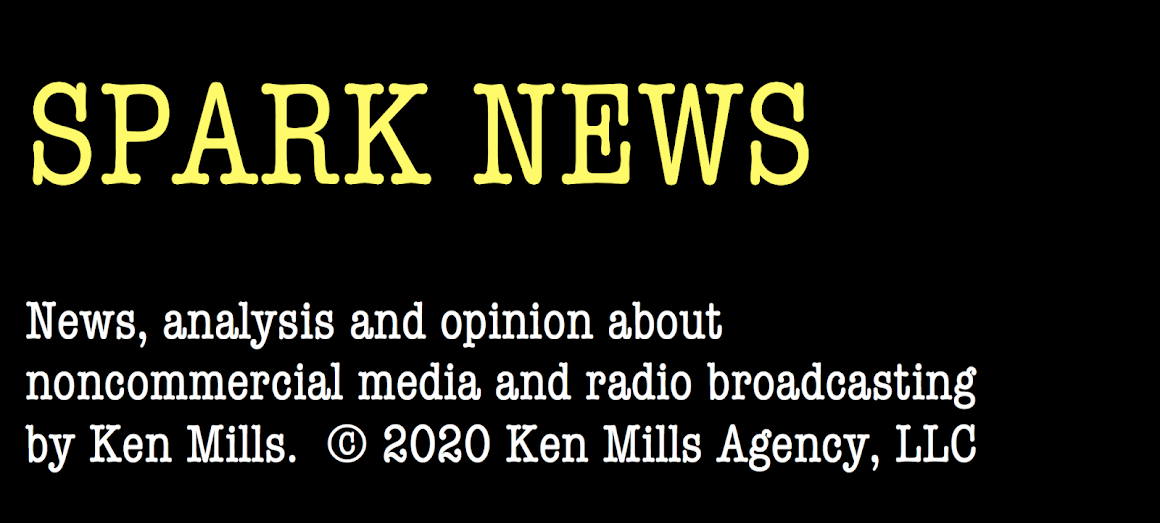 |
| Amy O |
A
recent incident in Lubbock involving a popular radio DJ and a stalker
underscores the importance of keep station personnel safe at public events.
In early
February, Amy Olivares, known as Amy O
on the air at Pop Hits station 104.9 The
Beat, realized she was being stalked.
According
to KCBD-TV in Lubbock [link], Amy
found photos taken of her inside her home without her knowledge on social media.
Then on February 12th she woke up and heard her patio door close.
The stalker was inside her home. Amy O
screamed and man ran away and she called the Lubbock police.
Amy’s story is strikingly similar to what happened to Mary Lucia, a DJ at The Current in the Twin Cities. We covered Lucia’s story in November 2015
[link].
 |
| Amy O being interviewed on KCBD-TV |
She told KCBD that encounters with the stalker started off when a young male fan
she considered harmless began showing at station remote broadcasts. Then the
man began bringing her coffee, then flowers, then food.
She
said that her admirer kept giving her "Things
that I never asked for, but I was being polite and saying thanks.”
Things
began to escalate. “I got text messages from him [with] pictures of me sleeping inside
my home. Next came a text message saying ‘now do I have your attention’ and ‘I’m
going to bring in the bigger guns.’"
Her mail was stolen
and finally the late night break-in happened. She called police when she
realized “A listener has turned into a
monster [and] has terrorized me. It has been happening for months.”
A
couple of days later Lubbock Police arrested a local man Chad Edward Joyce. Joyce
was released on a $3,000 bond and Amy O
secured a protective order against him. Stalking in Texas is a third degree
felony.
On-air
folks at commercial and public radio stations are urged to personally engage
with listeners. But was the Lubbock station in any way responsible for Amy O's
incident?
This is how Amy O is described on the 104.9 The Beat website [link]:
This is how Amy O is described on the 104.9 The Beat website [link]:
When she’s not on-air you
can find Amy O hanging out at any of Lubbock’s hottest spots. You will find her
at all Texas Tech sports events. And she definitely lives her life to the
fullest!
GRASSROOTS EFFORT UNDERWAY TO CREATE NEW NPR STATION IN RGV
February
26, 2019 [link to full story]
By
Luis Montoya
 |
| Volunteers seeking new RGV NPR station |
The
board was disbanded by the Diocese of Brownsville when Bishop Daniel Flores
sold PBS four years ago.
At
a meeting at the Corner Bakery on 10th Street in McAllen on Monday evening,
members of the board signaled their intention to set up a non-profit
organization to raise sufficient funds to create a new and improved National
Public Radio station.
The initial cost of getting a new NPR station up and running could cost upwards of $200,000, Upper Valley Community Advisory Board members believe. They said they would use the road map drawn for them by veteran public radio broadcaster Ken Mills.
 |
| Map of the lower Rio Grande Valley |
“This is a done deal.
Complaining about the Diocese is a waste of time and effort. People who want
NPR on local radio in the Valley need to build something new,” Mills told the Rio
Grande Guardian.
“I am passionate about
public radio because I believe it is a positive force in our society and
democracy. In my work as a consultant and executive in public radio I have
seen the ways public radio stations has helped bring people together.”
Mills
said his company, Spark News, is
prepared to provide pro bono advice to any person or organization that
seriously seeks to build a new NPR station.
“What is needed now is a
community campaign to Save NPR in the Valley. The purpose of the campaign is to
create awareness of the situation and form a nonprofit entity that will raise
money to Save NPR in the Valley and plan for new station,” Mills said.
“Community leaders who
want to Save NPR in the Valley should step forward now.”






























